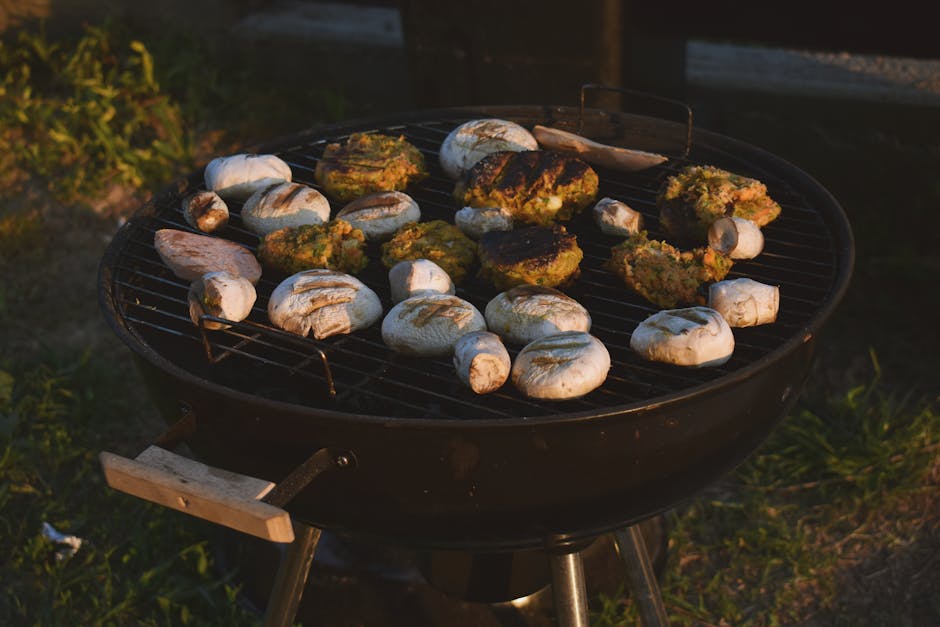Grilled chicken, a culinary staple across the globe, boasts a history as rich and varied as its countless marinades. While pinpointing the exact origin is difficult, the practice of grilling meat dates back millennia, with evidence suggesting early humans utilized fire for cooking as far back as 1 million years ago. Ancient civilizations, from the Greeks and Romans to various indigenous cultures, incorporated grilled meats into their diets, demonstrating the enduring appeal of this simple yet satisfying cooking method. The specific technique of marinating chicken before grilling, however, likely evolved more recently, possibly alongside the increased availability and affordability of poultry. The development of diverse marinades reflects regional culinary traditions and the abundance of local ingredients, contributing to a global tapestry of flavors and techniques.
Today, marinated grilled chicken reigns supreme as a popular and versatile dish. Statistics show that chicken is the most consumed meat in the United States, accounting for roughly 40% of total meat consumption, highlighting its widespread popularity. This preference is likely driven by factors like its relatively lower cost compared to beef or pork, its lean protein content, and its adaptability to various cooking methods. The marinade itself plays a crucial role, not only adding flavor but also tenderizing the meat and improving its moisture retention during grilling. Different cultures utilize unique combinations of herbs, spices, and acidic components to create distinctive marinades, reflecting regional tastes and culinary heritage. For example, Mediterranean marinades often feature lemon, oregano, and garlic, while Asian marinades might incorporate soy sauce, ginger, and sesame oil.
The cultural significance of grilled chicken is undeniable. It transcends geographical boundaries and socio-economic classes, appearing on menus from casual backyard barbecues to upscale restaurants. It’s a common feature at celebrations and family gatherings, representing community and shared meals. The act of grilling itself often carries symbolic weight, evoking feelings of summertime relaxation and outdoor enjoyment. Furthermore, the ease of preparation and adaptability of marinated grilled chicken makes it a favorite among home cooks, allowing for endless experimentation with different flavor profiles and serving styles. This recipe will explore a classic approach to marinated grilled chicken, offering a flavorful and satisfying dish that can be easily customized to personal preferences.
Ingredients and Measurements
This recipe yields approximately 4 servings of delicious marinated grilled chicken. The quantities can be easily adjusted to suit your needs; simply multiply or divide the ingredient amounts proportionally.
For the Chicken, you will need:
- 1.5 lbs boneless, skinless chicken breasts. Choose high-quality chicken breasts for optimal flavor and texture. Look for ones that are plump and firm, with no discoloration.
- 1 lb boneless, skinless chicken thighs. Including thighs adds juiciness and flavor to the final dish, creating a more balanced result.
For the Marinade, gather the following:
- 1/2 cup extra virgin olive oil. Use a good quality olive oil as it significantly impacts the overall taste of the marinade.
- 1/4 cup lemon juice, freshly squeezed. Freshly squeezed is best for a brighter, more vibrant flavor compared to bottled juice.
- 2 cloves garlic, minced. Mince finely for even distribution throughout the marinade.
- 1 tablespoon Dijon mustard. Dijon adds a subtle tanginess that complements the other flavors beautifully.
- 1 tablespoon dried oregano. Dried oregano works well here; however, you can substitute with 2 tablespoons of fresh oregano if you prefer.
- 1 teaspoon smoked paprika. Smoked paprika adds a lovely smoky depth to the marinade.
- 1/2 teaspoon salt. Adjust salt to your preference, keeping in mind the salt content of other ingredients.
- 1/4 teaspoon black pepper, freshly ground. Freshly ground pepper provides a superior flavor compared to pre-ground pepper.
- 1/4 cup chopped fresh parsley (optional). This adds a fresh, vibrant touch and a pop of color to the finished dish.
Important Note: Ensure all your measuring tools are clean and accurate for consistent results. Adjust ingredient quantities according to your taste preferences and the number of servings required. Always wash your hands thoroughly before handling raw chicken.
Professional Tip: For even more flavorful chicken, consider marinating it for at least 4 hours, or preferably overnight, in the refrigerator. This allows the marinade to fully penetrate the chicken, resulting in a more tender and flavorful final product.
Marinade Preparation
The success of your grilled marinated chicken hinges significantly on the quality of your marinade. A well-balanced marinade not only tenderizes the chicken but also infuses it with incredible flavor. For this recipe, we’ll be making a vibrant and zesty marinade that’s both easy to prepare and incredibly effective.
Begin by gathering your ingredients. You will need: 1/2 cup of olive oil (use extra virgin for the best flavor), 1/4 cup of lemon juice (freshly squeezed is always preferred), 2 tablespoons of soy sauce (low sodium is a healthier option), 1 tablespoon of Dijon mustard, 2 cloves of garlic (minced finely for even distribution), 1 teaspoon of dried oregano, 1 teaspoon of dried basil, 1/2 teaspoon of paprika, 1/4 teaspoon of black pepper, and 1/4 teaspoon of cayenne pepper (optional, for a touch of heat).
In a medium-sized bowl, whisk together the olive oil, lemon juice, and soy sauce until well combined. Ensure there are no visible oil separations. This step is crucial for an even distribution of flavors throughout the marinade.
Next, add the Dijon mustard, minced garlic, oregano, basil, paprika, black pepper, and cayenne pepper (if using). Whisk vigorously to thoroughly incorporate all ingredients. A well-mixed marinade ensures that every piece of chicken receives the same flavor profile.
Once all ingredients are fully incorporated, taste the marinade and adjust the seasoning as needed. You might want to add more lemon juice for extra tang, or a little more cayenne pepper for a spicier kick. Remember, taste is subjective, so personalize your marinade to your liking.
Important Note: Allow the marinade to sit for at least 15 minutes at room temperature before using. This allows the flavors to meld and deepen, creating a more complex and delicious marinade. For an even more intense flavor, you can prepare the marinade the night before and refrigerate it, allowing the flavors to develop overnight. However, always bring the marinade to room temperature before marinating the chicken.
Finally, once you are ready to marinate your chicken, ensure that the chicken is completely submerged in the marinade. Use a resealable bag or a shallow dish for even coverage. The longer you marinate the chicken (up to 24 hours), the more flavorful and tender it will become. But remember to never leave marinated chicken at room temperature for more than two hours.
Chicken Preparation
Selecting the right chicken is crucial for juicy, flavorful grilled chicken. Opt for bone-in, skin-on chicken pieces, such as thighs and drumsticks, for superior taste and moisture retention. These cuts are more forgiving on the grill and less likely to dry out compared to boneless, skinless breasts. Aim for about 1.5 to 2 pounds of chicken, enough to serve 2-3 people depending on appetite.
Begin by thoroughly rinsing the chicken under cold running water. Pat the chicken pieces completely dry with paper towels. This is a vital step; excess moisture can lead to steaming instead of grilling, resulting in a less desirable texture. Ensure you remove any visible fat or imperfections from the chicken.
Once dry, it’s time to prepare the chicken for marinating. If using whole chicken pieces, consider cutting them into smaller, more evenly sized portions for consistent cooking. This ensures that all parts cook at the same rate and prevents some pieces becoming overcooked while others remain undercooked. For example, you may want to separate the chicken thighs into individual pieces if they’re particularly large.
Now, consider the size and thickness of your chicken pieces. For even cooking, aim for uniformity in thickness. If some pieces are significantly thicker than others, consider trimming excess fat or lightly pounding thicker areas with a meat mallet to achieve a more even thickness. This will help ensure even cooking throughout the grilling process.
Finally, before marinating, make small shallow slits or incisions across the surface of the chicken pieces. This helps the marinade penetrate deeper into the meat, resulting in more intense flavor and better moisture retention. Don’t cut too deeply, however, as you risk compromising the structural integrity of the chicken.
With your chicken prepared, you’re ready to move on to the next step: marinating! Properly prepared chicken will ensure a delicious and successful grilled chicken experience. Remember, attention to detail in this stage significantly impacts the final outcome.
Marinating Time: Getting the Perfect Flavor
The marinating time for your grilled chicken is crucial for achieving tender, juicy, and flavorful results. It’s not simply a matter of longer being better; over-marinating can actually lead to tough, mushy chicken. The ideal time depends on several factors, including the type of marinade, the cut of chicken, and the desired level of flavor penetration.
For most standard marinades, 4 to 6 hours is a sweet spot. This allows the flavors to penetrate the chicken sufficiently without breaking down the muscle fibers excessively. Think of it as a gentle infusion of taste. For smaller cuts, like chicken breasts cut into smaller pieces, you might even achieve great results in as little as 2-3 hours. Larger pieces, such as whole legs or bone-in breasts, may benefit from the full 6-hour range.
However, you can absolutely marinate longer, up to 24 hours, under the right circumstances. For longer marinades, it’s essential to use a marinade that is not overly acidic. Highly acidic ingredients, like lemon juice or vinegar, can start to cook the chicken if left for extended periods, resulting in a less-than-desirable texture. If using a highly acidic marinade, stick to the shorter end of the recommended time (4-6 hours).
To maximize flavor absorption during marinating, ensure your chicken is completely submerged in the marinade. Use a resealable bag or a shallow, airtight container. For larger quantities, consider using multiple bags to ensure even coverage. If using a shallow container, turn the chicken pieces halfway through the marinating time to ensure all sides are evenly coated.
Refrigerate your chicken throughout the entire marinating process. This is crucial for food safety. Never leave chicken at room temperature while marinating. Remember to discard any leftover marinade after use; do not reuse it on the cooked chicken.
Experimentation is key! Once you understand the basic principles, feel free to adjust the marinating time to your preference. Keep notes on your results, including the type of marinade, chicken cut, and marinating time, to refine your technique for future grilling adventures. Don’t be afraid to try different marinades and marinating times to discover your ideal flavor profile!
Grilling Techniques for Perfectly Grilled Chicken
Grilling chicken successfully hinges on a few key techniques. Proper preparation and execution ensure juicy, flavorful, and perfectly cooked meat every time. We’ll cover the essentials here, helping you master the art of grilled chicken.
Prepare your grill: Begin by preheating your grill to medium-high heat (around 375-400°F or 190-205°C). For gas grills, ensure even heat distribution across the grilling surface. For charcoal grills, arrange the coals for even heat, leaving a cooler zone if needed for indirect cooking. Clean the grates thoroughly with a grill brush to remove any residue from previous cooking sessions. This prevents sticking and imparts a cleaner flavor to your chicken.
Oil the grates: Lightly oil the hot grill grates with a high-smoke-point oil like canola or grapeseed oil. Use a paper towel or a folded-up piece of cloth secured to tongs to avoid burns. This step prevents sticking and helps create those beautiful grill marks.
Grilling the Chicken: Place your marinated chicken pieces on the preheated grill, ensuring they aren’t overcrowded. Overcrowding lowers the grill temperature and leads to steaming instead of grilling. Leave about 1 inch of space between each piece for proper heat circulation. For even cooking, rotate the chicken every 5-7 minutes, ensuring all sides are exposed to direct heat. A good indicator of doneness is to check the internal temperature with a meat thermometer. The internal temperature should reach 165°F (74°C) in the thickest part of the chicken.
Indirect Grilling (for larger cuts): For larger chicken pieces like whole breasts or bone-in thighs, consider using indirect heat. After initial searing on direct heat for about 3-4 minutes per side to develop a nice crust, move the chicken to a cooler area of the grill (away from direct flames). Close the grill lid and continue cooking until the internal temperature reaches 165°F (74°C). This method helps prevent burning the outside while ensuring the inside is fully cooked.
Resting the Chicken: Once the chicken reaches the desired internal temperature, remove it from the grill and let it rest for at least 5-10 minutes before slicing or serving. Resting allows the juices to redistribute throughout the meat, resulting in a more tender and flavorful final product. Cover loosely with foil to keep it warm.
Monitoring and Adjustments: Keep a close eye on your chicken while it’s grilling. Adjust the heat as needed to prevent burning or undercooking. If the outside is browning too quickly, lower the heat or move the chicken to a cooler area of the grill. If cooking is taking too long, increase the heat slightly.
Important Note: Always use a food thermometer to ensure your chicken is cooked to a safe internal temperature. Undercooked chicken can cause foodborne illness.
Checking for Doneness
Ensuring your marinated grilled chicken is cooked thoroughly is crucial for food safety and optimal tenderness. Undercooked chicken can harbor harmful bacteria, while overcooked chicken becomes dry and tough. Therefore, accurately checking for doneness is paramount.
The most reliable method is using a food thermometer. Insert the thermometer into the thickest part of the chicken breast, avoiding the bone. The internal temperature should reach a minimum of 165°F (74°C). This ensures that the chicken is cooked throughout and safe to eat. Don’t rely solely on visual cues like color, as these can be misleading.
While a thermometer provides the most accurate reading, there are other indicators you can observe. The juices should run clear when you pierce the chicken with a fork or knife. If the juices are still pink or bloody, the chicken needs more cooking time. However, relying on this method alone is risky, and a thermometer is always recommended.
For chicken breasts that are approximately 1 inch thick, grilling time usually ranges from 6-8 minutes per side, depending on the heat of your grill. However, thicker cuts (over 1.5 inches) will require longer cooking times. Always use a thermometer to ensure the internal temperature reaches 165°F (74°C), regardless of grilling time.
Avoid repeatedly opening the grill lid while cooking, as this can cause significant temperature fluctuations and increase cooking time. This also results in uneven cooking and may lead to a loss of moisture. Instead, try to minimize opening the lid to check on the chicken’s progress.
Once the chicken reaches the safe internal temperature of 165°F (74°C), remove it from the grill and let it rest for 5-10 minutes before slicing and serving. This resting period allows the juices to redistribute throughout the meat, resulting in a more tender and flavorful chicken breast. Never cut into the chicken to check for doneness before it has rested, as this will release the flavorful juices and make the chicken drier.
Remember, food safety is paramount. Always use a food thermometer to ensure your grilled chicken reaches a safe internal temperature of 165°F (74°C). This simple step will guarantee a delicious and safe meal for you and your family.
Recommendations
For the most flavorful and tender grilled chicken, marinate the chicken for at least 4 hours, or preferably overnight. This allows the flavors to penetrate deeply into the meat. Don’t be afraid to experiment with different marinade combinations – citrus juices, herbs, spices, and even a touch of sweetness can create unique and delicious results. Remember to adjust the marinade ingredients to your taste preference.
Serving Suggestions: This marinated grilled chicken is incredibly versatile. Slice it and serve it on top of fresh salads, alongside grilled vegetables like zucchini and bell peppers, or use it to create delicious chicken sandwiches or wraps. It’s also fantastic served with rice, quinoa, couscous, or roasted potatoes. Consider adding a vibrant salsa or a creamy avocado sauce for extra flavor and texture.
Storage: Leftover grilled chicken should be stored in an airtight container in the refrigerator for up to 3-4 days. Ensure the chicken is thoroughly cooled before storing to prevent bacterial growth. You can also freeze the cooked chicken for up to 3 months. To freeze, wrap the chicken tightly in plastic wrap, then place it in a freezer-safe bag or container.
Complementary Dishes: The versatility of grilled chicken makes it a perfect centerpiece for many meals. Consider pairing it with a side of roasted vegetables, a fresh green salad with a light vinaigrette, or a creamy pasta salad. For a more substantial meal, serve it with rice pilaf, mashed potatoes, or a vibrant corn salad. The possibilities are endless!
Nutritional Information (per serving, approximate values will vary based on marinade and chicken portion size): Calories: Approximately 200-250 calories. Protein: 30-35 grams. Fat: 5-10 grams. Carbohydrates: 2-5 grams. These values are estimates and may vary depending on the specific ingredients and portion size used. For precise nutritional information, use a nutrition calculator with the exact ingredients and quantities used in your recipe.
Important Note: Always ensure your chicken is cooked to an internal temperature of 165°F (74°C) to ensure it is safe to eat. Use a meat thermometer to check the temperature in the thickest part of the chicken.





